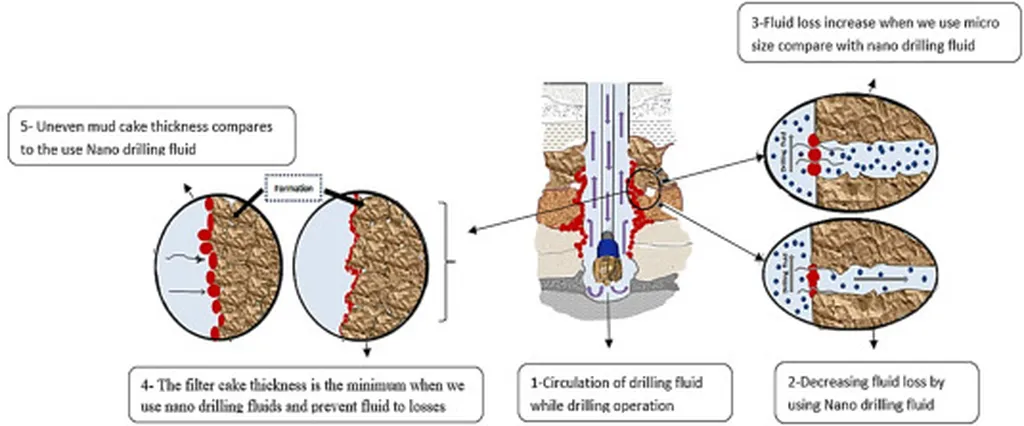In the ever-evolving landscape of nanotechnology, a recent review published in *Chemical Process Design* sheds light on the transformative potential of nanoparticles, particularly in the realm of drilling fluids and environmental applications. Led by Fardin Talebi Sarokolai from Shahrood University of Technology in Iran, the research delves into the fundamentals, classification, and characterization of nanoparticles, offering a comprehensive overview of their unique properties and diverse applications.
Nanoparticles, with their exceptionally high surface area-to-volume ratio and controllable reactivity, have become a cornerstone in various industries. From medicine to electronics, their ability to modify optical, electrical, and magnetic properties has paved the way for groundbreaking innovations. In the context of drilling fluids, these tiny powerhouses can enhance stability under harsh subsurface conditions, a critical factor in the oil and gas industry.
One of the most intriguing aspects of this research is the emphasis on biological synthesis of nanoparticles using plant extracts and microorganisms. This eco-friendly approach not only reduces production costs but also mitigates environmental hazards associated with traditional methods. As Talebi Sarokolai explains, “The biological synthesis of nanoparticles offers a sustainable alternative that aligns with the growing demand for green technology.”
The review provides an in-depth discussion on the classification and physicochemical features of nanoparticles, highlighting the key differences in behavior and functionality at the nanoscale. This understanding is crucial for optimizing their performance in various applications. Several case studies involving biologically synthesized nanoparticles are presented, demonstrating their potential across different sectors, including agriculture.
In the agriculture sector, nanoparticles can revolutionize practices such as precision farming, pest control, and soil health management. For instance, nano-fertilizers can enhance nutrient delivery to plants, improving crop yields and reducing environmental impact. Similarly, nano-pesticides can target specific pests more effectively, minimizing the need for broad-spectrum chemicals.
The research also explores the use of nanoparticles in environmental remediation. Their high reactivity and large surface area make them ideal for cleaning up pollutants in soil and water. This has significant implications for the agriculture industry, where soil and water contamination can severely impact crop production and food safety.
As we look to the future, the insights provided by this review could shape the development of new technologies and practices in the agriculture sector. The shift towards green synthesis methods and the exploration of nanoparticles’ unique properties offer a promising path forward. As the research community continues to innovate, the potential for nanoparticles to drive positive change in agriculture and beyond becomes increasingly evident.
For those interested in the technical details, the review offers a wealth of information on the characterization of nanomaterials and their behavior at the nanoscale. It serves as a valuable resource for researchers aiming to adopt green synthesis strategies in their investigations. With contributions from experts like Fardin Talebi Sarokolai from Shahrood University of Technology, this review is a testament to the collaborative efforts driving the field of nanotechnology forward.

